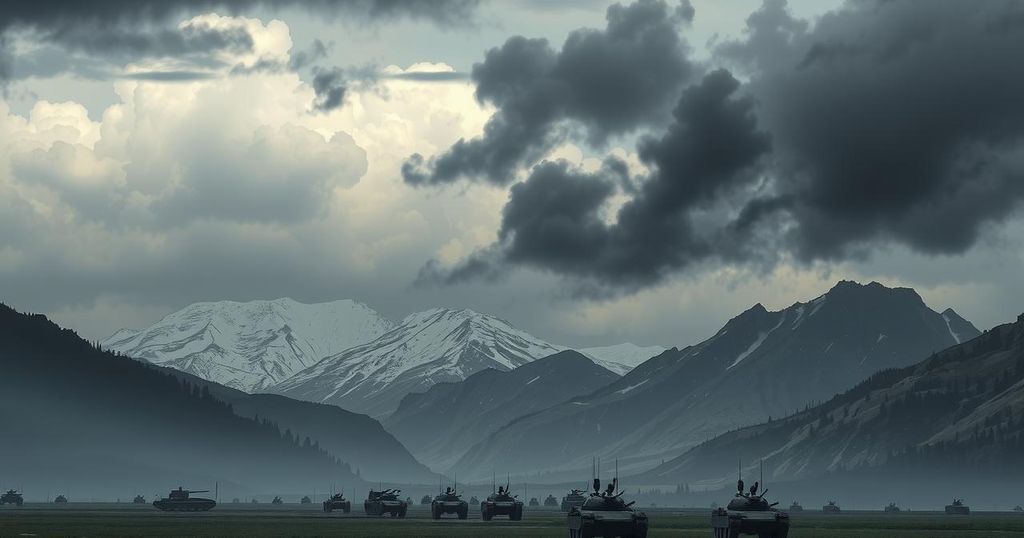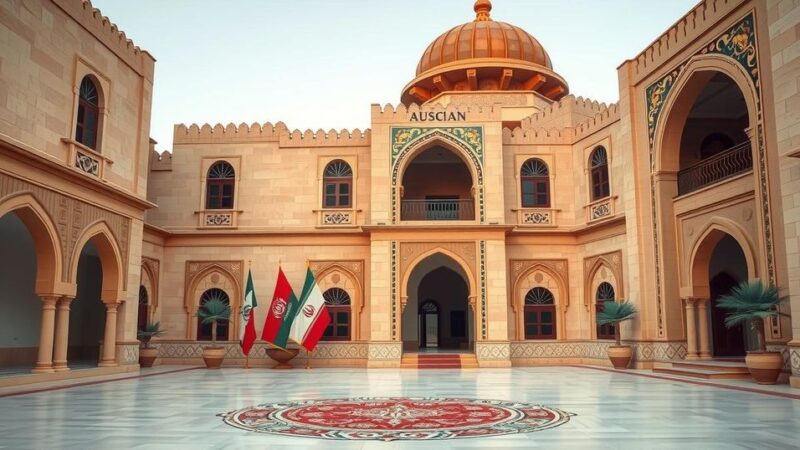The Syrian Army has launched a military offensive against Hezbollah along the Lebanon border, escalating tensions with Iranian forces. Heavy clashes have occurred, resulting in casualties and a shift in coordination between Syrian and Lebanese forces. This marks a significant challenge to Iranian influence as Syria under President Ahmed al-Sharaa seeks to reclaim sovereignty and reduce Hezbollah’s operations.
The Syrian Army has initiated a large-scale military offensive against Iranian-backed Hezbollah militants along the Lebanon border. This operation signifies an important escalation in hostilities between the Syrian government and Tehran’s proxy forces. Reports from reputable news outlets such as Al Arabiya and Sky News Arabia indicate that clashes have resulted in casualties on both sides and fortified security collaboration between Syria and Lebanon against Hezbollah.
Engagements are primarily occurring in Hosh Al-Sayyid Ali, a border town held by Hezbollah since 2013. The Syrian Army has carried out a comprehensive artillery and missile operation targeting Hezbollah positions. A Syrian defense ministry representative noted that the objective is to “completely retake the town” and secure the border against Hezbollah’s activities, particularly smuggling and arms trafficking.
Syrian officials are reportedly cooperating closely with Lebanon’s military, as the Lebanese Army has reacted to Hezbollah assaults, highlighting the tensions even within Hezbollah’s former ally base in Lebanon. A military source stated, “Our forces have been ordered to respond to any attacks from Syrian territory,” emphasizing the escalating conflict’s broader implications.
In retaliation against the Syrian offensive, Hezbollah militants have launched rocket attacks on Syrian Army positions, notably near Homs, which triggered an intensified assault from Syrian forces leading to Hezbollah retrenchments. Sky News Arabia claims significant casualties, reporting at least 12 Hezbollah fighters and 8 Syrian soldiers killed in ongoing confrontations.
The recent confrontations illuminate a pivotal shift in Syria’s approach to Iranian influence. Under President Ahmed al-Sharaa’s administration, there is a clear intent to regain full control of national borders and curb Hezbollah’s unauthorized operations. This reflects a push to reassert Syria’s sovereignty and reduce external meddling.
This dynamic poses a substantial challenge to Iran’s regional ambitions, as the potential loss of Hezbollah’s strategic footholds would limit Tehran’s capacity to uphold its ‘Axis of Resistance’ against Western and Arab rivals. Additionally, Hezbollah’s military setbacks could invigorate opposition within Lebanon, weakening Iranian influence there.
The situation underscores the fractures within the Iran-led alliance, as the Syrian government prioritizes national interests over Iranian expansionism. Facing coordinated military pressure from both Syrian and Lebanese forces, Hezbollah risks increasing isolation, signaling a potential decline in Tehran’s unchecked authority within Syria.
In conclusion, the Syrian Army’s offensive against Hezbollah signifies a consequential shift in the regional balance of power. This operation reflects Syria’s commitment to reclaim sovereignty and reduce Iranian influence, marking a significant escalation in hostilities. As Hezbollah faces military setbacks and shifting alliances, the prospects for Tehran’s influence in the region become increasingly precarious.
Original Source: www.ncr-iran.org






